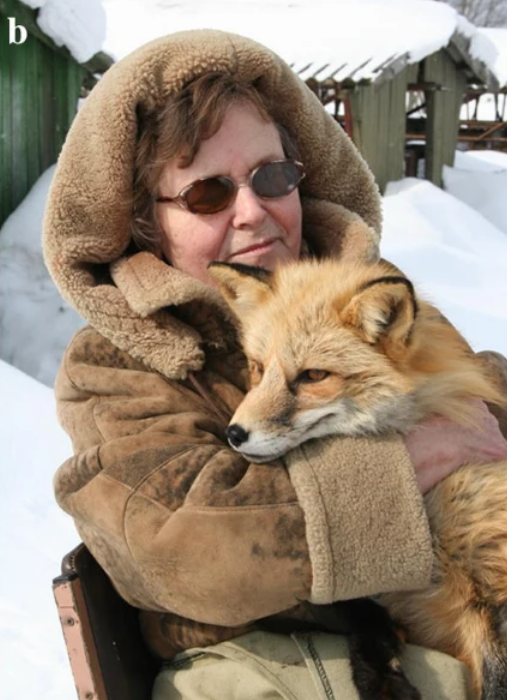#feministfriday episode 467 | foxy
Good afternoon everyone,
London is full of quite fearless foxes, and I'm used to them not freaking out at me walking past them. Last night, though, felt like it marked a new stage in this evolution. When I walked down the path to my flat a fox started trotting towards me (also on the path!) like a little dog, and after I closed the door, sat and stared balefully at me through the window. I had a very strong sense of another being wanting something from me, although I was not clear on what exactly that was.
Women are consistently at the forefront of fox domestification research, starting with Lyudmila Trut who found out just how quickly foxes become tame:

Belyaev immediately recruited 25-year-old Lyudmila Trut to his team. Trut quickly became the lead researcher on the experiment, working with Belyaev on every aspect from the practical to the conceptual. Trut turned 85 years old in November of 2018 and remains the lead investigator on the work to this day. Starting from what amounted to a population of wild foxes, within six generations (6 years in these foxes, as they reproduce annually), selection for tameness, and tameness alone, produced a subset of foxes that licked the hand of experimenters, could be picked up and petted, whined when humans departed, and wagged their tails when humans approached. An astonishingly fast transformation. Early on, the tamest of the foxes made up a small proportion of the foxes in the experiment: today they make up the vast majority.

https://evolution-outreach.biomedcentral.com/articles/10.1186/s12052-018-0090-x
Erin Hecht has done interesting work with Trut on the changes to fox brains when they are bred for either tameness or aggression. As I write this, I realise that whilst so far foxes have found an evolutionary advantage in being unafraid of people, there's nothing to stop them discovering the power of ganging up on people:
By analyzing MRI scans of the foxes, Hecht and her colleagues showed that both the foxes bred to be tame and those bred to be aggressive have larger brains and more gray matter than those of the control group. These findings run contrary to other studies on chickens, sheep, cats, dogs, horses, and other animals that have shown domesticated species have smaller brains, with less gray matter, than their wild forebears.
https://news.harvard.edu/gazette/story/2021/06/research-suggests-a-surprising-evolutionary-brain-change-between-foxes-and-dogs/
I'm sure that by now you are thinking, what actually is standing in the way of me having a little fox pet I can cuddle every day? Amy Bassett has the answer and it boils down to; your continued desire to not drink urine:
“[You can be] sitting there drinking your cup of coffee and turning your head for a second, and then taking a swig and realizing, ‘Yeah, Boris came up here and peed in my coffee cup,’” said Amy Bassett, the Canid Conservation Center’s founder.
https://www.pbs.org/newshour/science/domesticated-foxes-genetically-fascinating-terrible-pets
Love,
Alex.